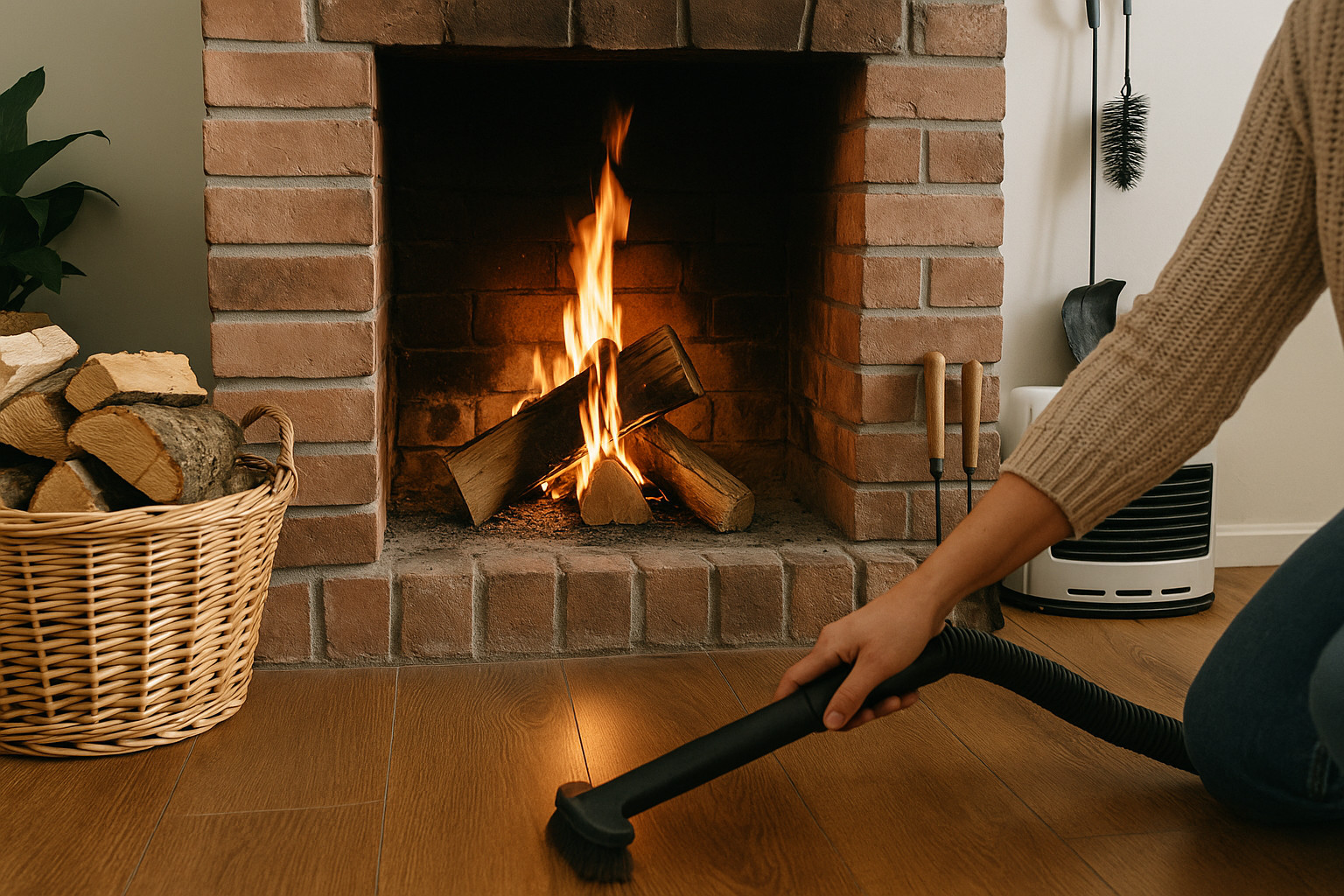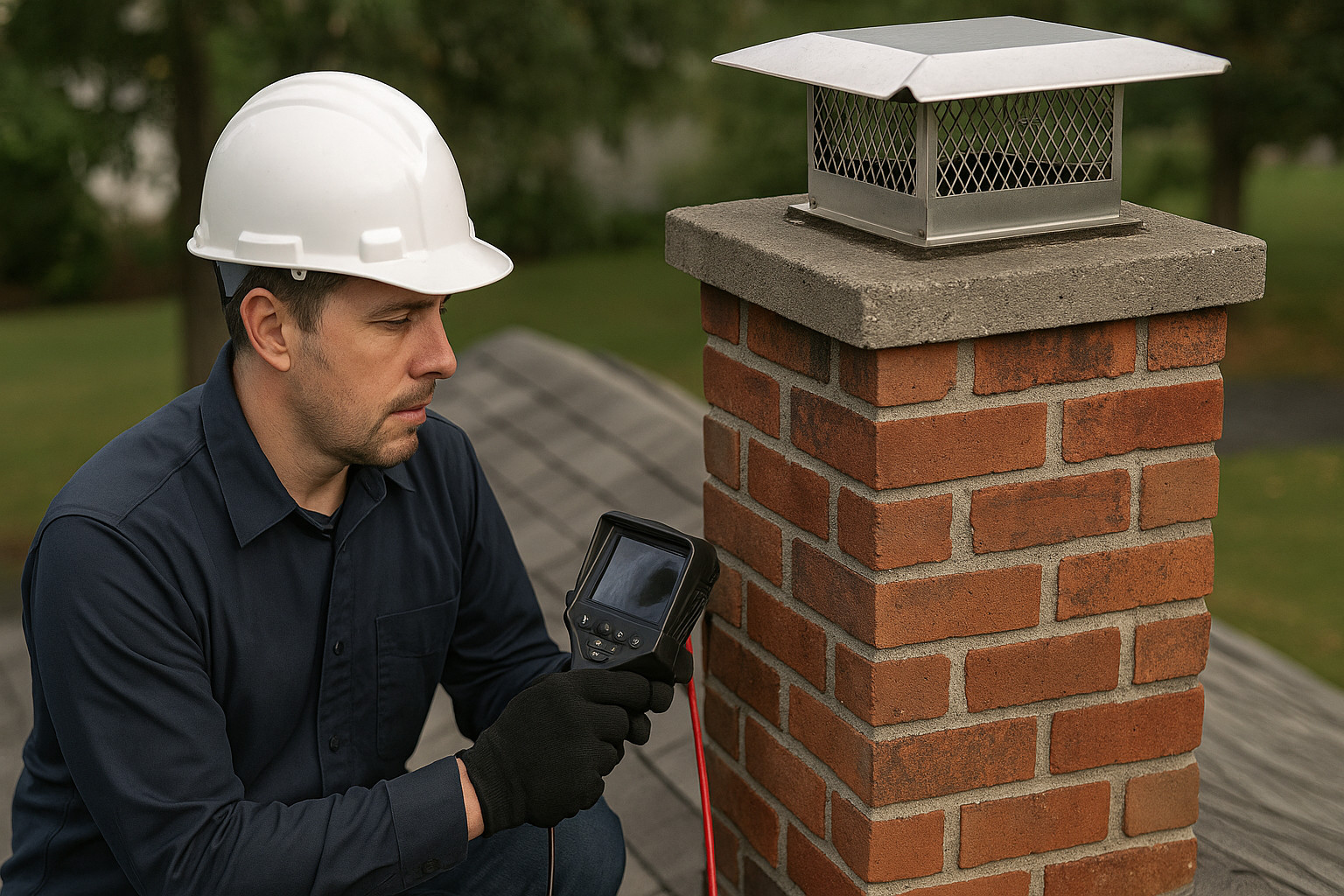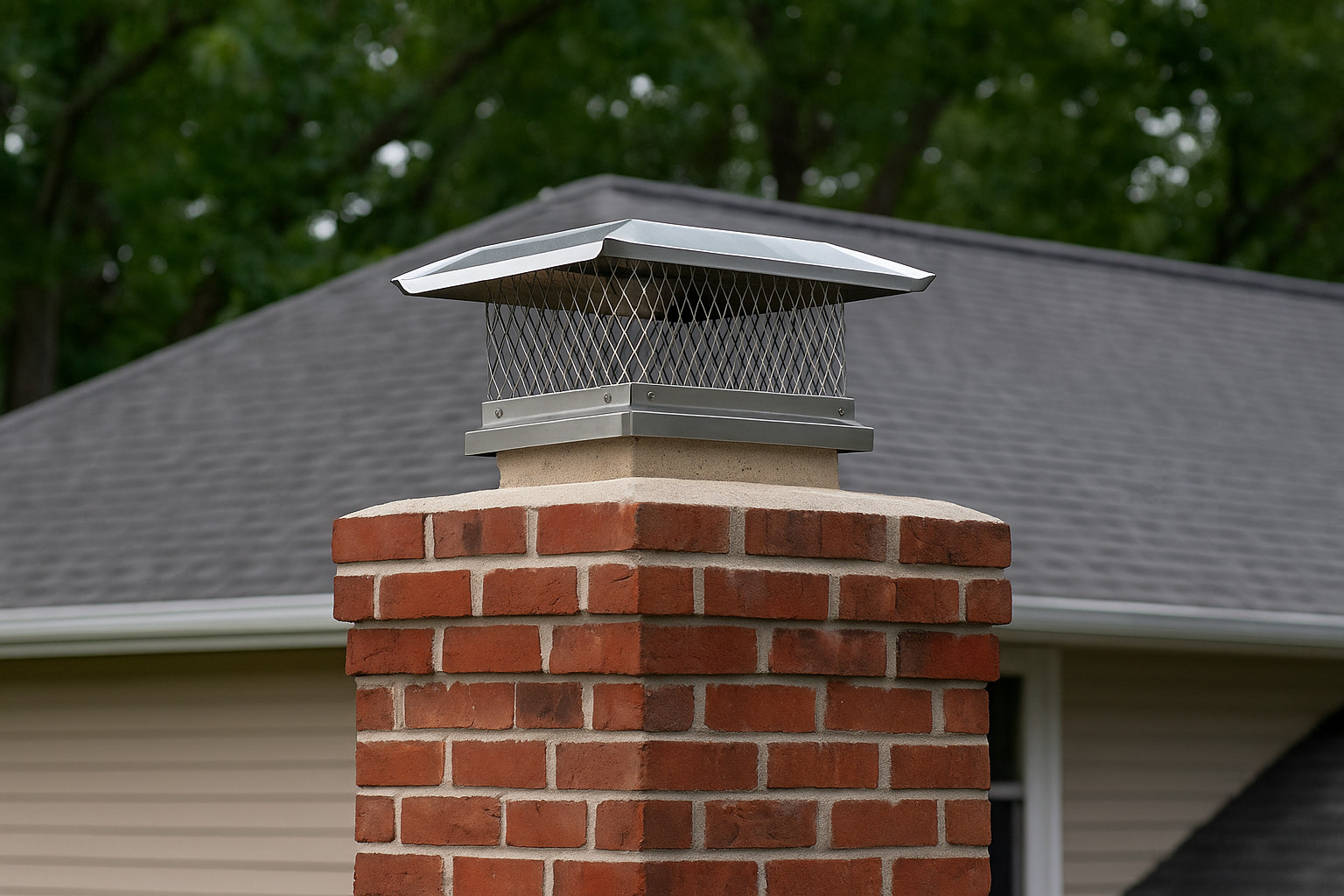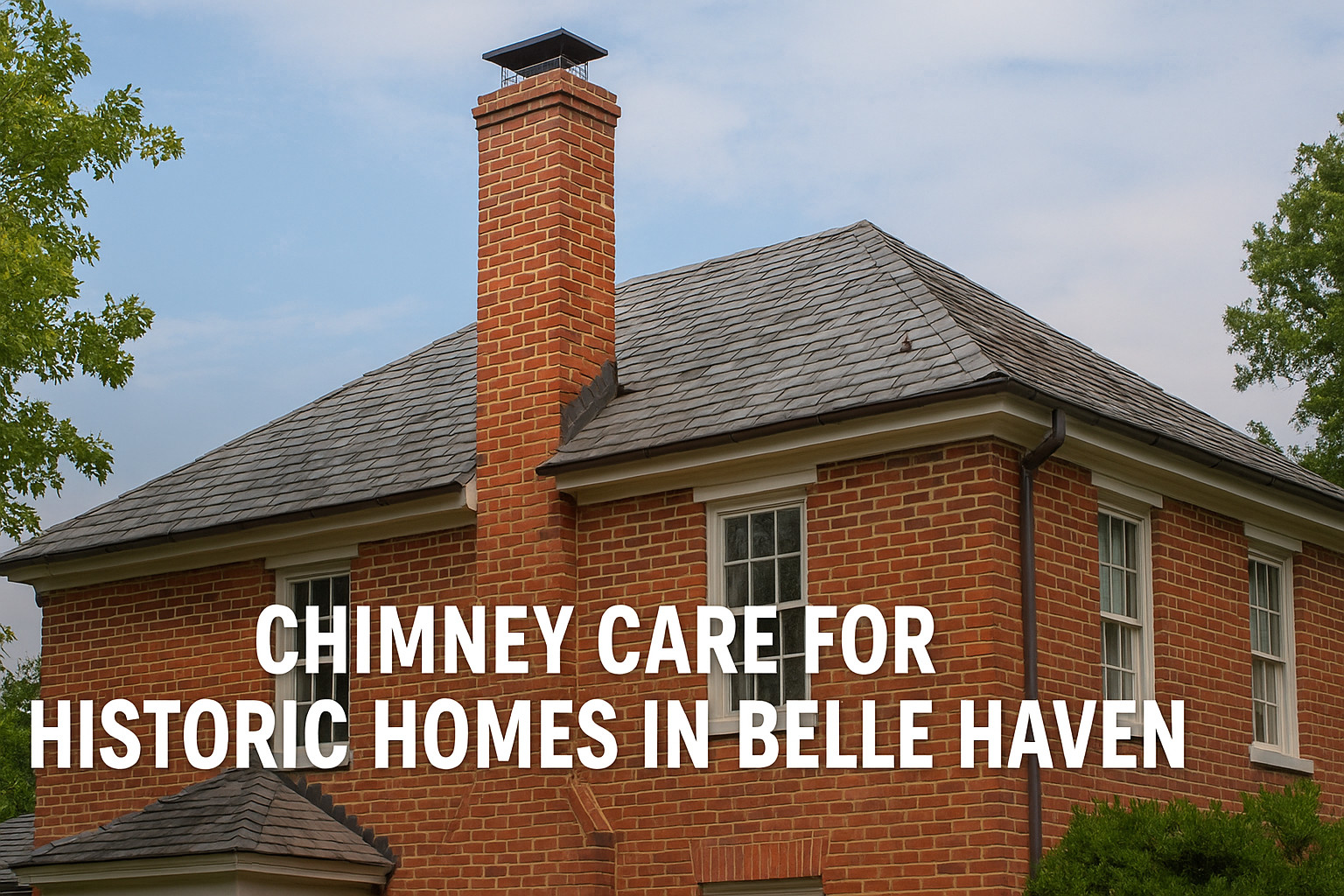Prepping Your Fireplace for Winter: A Checklist for Danbury Homes
As winter approaches in Danbury, preparing your fireplace is essential for both safety and comfort. From cleaning and inspections to testing detectors and sealing drafts, a proper seasonal checklist ensures your home stays warm, efficient, and protected all season long.
Share:
Table of Contents
Winter is approaching in Danbury and preparing your fireplace goes hand in hand with home maintenance. This guide covers everything from cleaning your fireplace vent to testing carbon monoxide detectors and servicing the heating system to help you avoid fire hazards or interruptions during severe weather.
Understand Why Fireplace Maintenance Matters
Proper care of a gas fireplace or wood burning hearth improves heating system efficiency and reduces the risk of gas leaks or carbon monoxide exposure. As part of general home maintenance a fall tune up is essential before the first winter fire.
Conduct Fireplace Inspection and Maintenance
Visually inspect the fireplace vent pilot light and gas fireplace ignition system. Confirm electronic ignition works correctly and that the propane gas valve opens fully. Check propane logs ceramic logs or glass rocks for cracks or soot buildup.
Inspect Chimney and Fireplace Components
Examine the chimney structure, fireplace clean out and masonry around fireplace hearth. If soot or debris has built up take action before winter burns begin.
Hire Professional Helpers for Fall Tune Up
A certified chimney sweep can handle creosote removal cleaning lining and safety checks including testing electronic ignition propane gas valve pilot light and ensuring there are no gas leaks. Professional services improve long term performance and align with best practice recommendations from industry sources.
Clean Creosote Residue and Soot
Creosote buildup increases fire hazard and impacts air quality. A thorough fireplace cleaning reduces soot in chimney flue and fireplace vent improving heating system performance. Remove residue using certified equipment or ash vacuum tools.
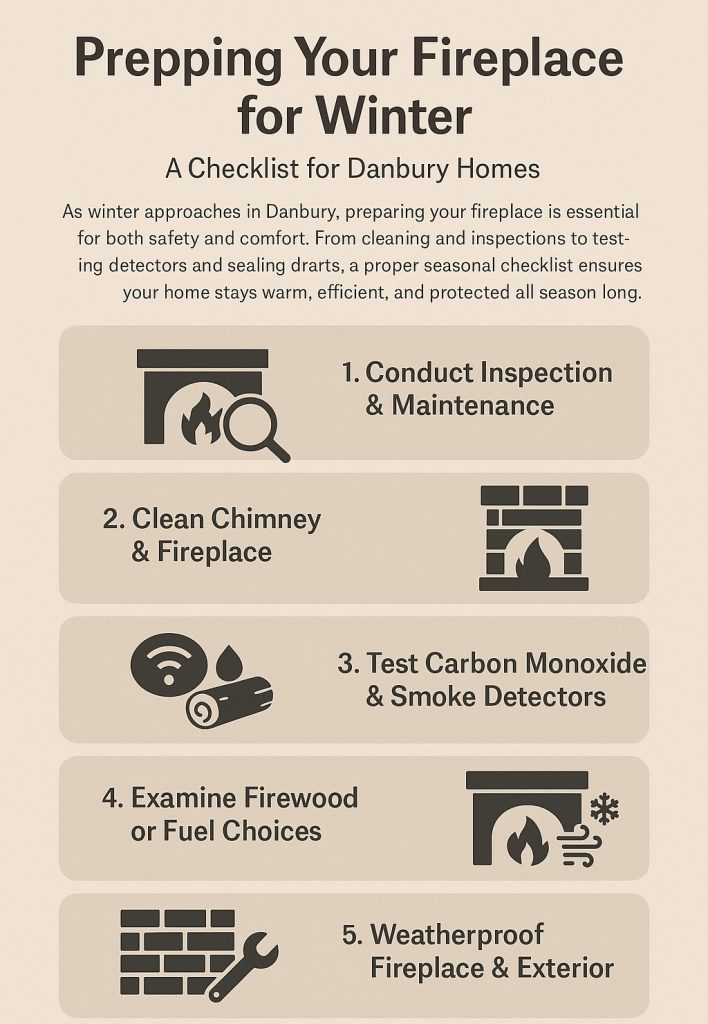
Test Carbon Monoxide and Smoke Detection
Carbon monoxide is deadly yet invisible. Test all carbon monoxide detectors and smoke alarms. Replace batteries and make sure devices cover interior walls near units that could be affected by flame use or heating oil fumes. In a power outage use a backup generator and NOAA weather radio to maintain safety.
Inspect Gas Fireplace Safety Systems
If your fireplace uses propane logs or a propane stove confirm there are no gas leaks. Test the ignition to ensure reliable startup and verify ventilation remains clear. Proper operation reduces risks related to heating oil or propane installations in your home.
Additional Fireplace Preparation Tips for Danbury Homeowners
Examine Firewood or Fuel Choices
Choosing the right fuel source is essential for both fireplace performance and safety. If you use wood as your primary heat source or enjoy an occasional cozy fire, be sure to burn only seasoned hardwood such as oak, maple, or ash. Freshly cut or green wood holds too much moisture, which produces excess smoke, contributes to creosote buildup in your chimney vent, and reduces heat efficiency. Storing wood indoors near hardwood flooring or walls can also introduce insects or mold if the logs are not fully dried. If your fireplace is fueled by gas, confirm that your propane gas valve and electronic ignition systems are functioning properly. Never attempt to burn treated lumber, plastics, or painted materials, as these can release harmful fumes and damage your flue. Smart fuel choices lead to cleaner burns, better heat output, and fewer service calls throughout the winter.
Weatherproof Fireplace and Exterior Openings
Keeping cold air out and warm air in is a core part of fireplace efficiency. Start by checking for drafts around exterior doors, fireplace dampers, and vents. Seal any gaps with weather stripping or fireplace insulation kits to minimize heat loss and improve indoor comfort. You should also inspect the chimney flashing to ensure it is secure and watertight, especially before storms or snowfall. If your home’s gutter system is clogged, water may pool near the chimney foundation, causing long-term damage. Consider extending weather protection efforts beyond the fireplace itself by inspecting storm shutters, windows, and siding. In homes where the fireplace supports a broader heating system, sealing air leaks helps reduce strain on the water heater, furnace, and backup heating units, especially during power outages or severe weather events.
Coordinate Fireplace Prep with Broader Home Safety
Many Danbury homes rely on water heaters and backup heating systems. Check the heating oil tank, pilot lights, and related lines. Ensure that your primary heating system and emergency generator are functioning properly before winter. Review the placement of fire extinguishers and inspect electrical wiring around heating sources.
Schedule Repairs for Damaged Components
Look for cracked firebrick, rusted fireplace grates, or deteriorating mortar. Repairs may include chimney crown repair, chimney liner replacement, or sealing leaks. Addressing these issues before winter preserves structural integrity and supports long-term home maintenance goals.
Align Fireplace Prep with Interior Design Choices
Preparing for winter may include updating nearby interior walls. Use neutral paint or mildew-resistant coating near fireplaces to reduce smoke staining. Apply a self-priming bonding primer or high-hiding oil-based primer for the best finish and durability near heat sources.
Integrate Fireplace Care with Seasonal Landscaping
Maintain your chimney area by cleaning gutters and inspecting storm shutters and drainage systems. This helps reduce storm damage and water intrusion near the chimney base. Trim back any tree branches that hang over your roof, especially if you live near wooded areas or local parks like Dyke Marsh Wildlife Preserve or along the Potomac River. Accumulated leaves and falling limbs can clog the flue or damage the chimney cap during high winds or heavy snow. Seasonal landscaping not only protects your chimney but also improves your home’s overall curb appeal and resilience against severe weather.
Maintain Indoor Air Quality with Smart Plants
During winter, homes in Danbury are sealed tightly to retain heat, which can reduce air circulation and lead to stale or dry air. Incorporating houseplants is a natural way to balance indoor air quality while enhancing your home environment. Plants such as rubber plant, spider plant, aloe, sago palm, Ficus elastica, snake plant, ZZ plant, cast iron plant, or zebra haworthia are known for their air-purifying qualities and low maintenance needs. Place these plants in areas away from direct heat sources, fireplaces, or vents to prevent leaf damage. Pairing these greenery elements with smart humidity control and regular heating system maintenance can help you create a more comfortable, breathable living space during the colder months.
Final Checklist and Winter Emergencies
Prepare a winter kit that includes backup generator instructions first aid supplies matches and extra propane logs or board games to pass the time during power outages. Review your insurance policy for fireplace related coverage especially if you rely on a propane fireplace insert or a heating oil delivery contract.
Conclusion and Last Steps
Prepping your fireplace is not just a seasonal chore it is essential home maintenance that safeguards against fire risk carbon monoxide exposure gas leaks and structural damage. Follow this checklist to ensure your fireplace vent pilot light propane stove or water heater works safely all winter. For expert help with fireplace cleaning inspection and repair in Danbury contact Certified Chimney today.
Article details:
- Published by:
- Certified Chimney CT
- Published to:
- Last modified:
- October 2, 2025
Share:
Continue learning:

